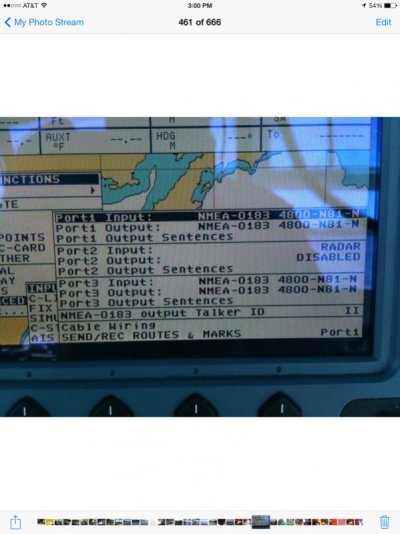Capt Kangeroo
Senior Member
I'm trying to hook a Horizon 2150AIS to a Ray E80 plotter. Made all connections as required & all worked fine, AIS data was received by the E80 and correctly displayed. I turned off the equipment after playing with it for an hour and when I later turned it back on the AIS data from the radio was no longer being received by the E80 plotter.
Verified all connections, double checked all settings on both units to no avail.
Question: If i put my meter across the nmea input to the radio I see rapid voltage fluctuations from a few tenths volt up to 5 volts, when I do the same test to the AIS output from the radio I see only a few tenths of a volt fluctuation. I realize this is a crude test but shouldn't the fluctuations be similar between the nmea input and AIS data output???? Note the AIS continues to work/display fine on the radio it simply does not output it or perhaps the E80 can no longer read it. There are numerous strong targets on the radio AIS display so it is not a case of no AIS targets to output.
Thoughts anyone?
Verified all connections, double checked all settings on both units to no avail.
Question: If i put my meter across the nmea input to the radio I see rapid voltage fluctuations from a few tenths volt up to 5 volts, when I do the same test to the AIS output from the radio I see only a few tenths of a volt fluctuation. I realize this is a crude test but shouldn't the fluctuations be similar between the nmea input and AIS data output???? Note the AIS continues to work/display fine on the radio it simply does not output it or perhaps the E80 can no longer read it. There are numerous strong targets on the radio AIS display so it is not a case of no AIS targets to output.
Thoughts anyone?

